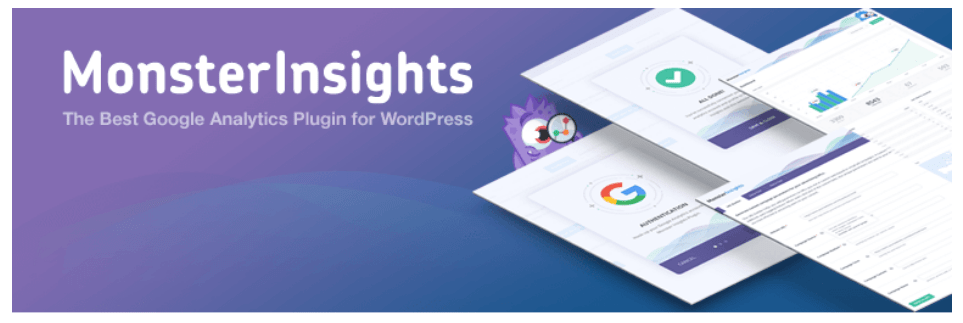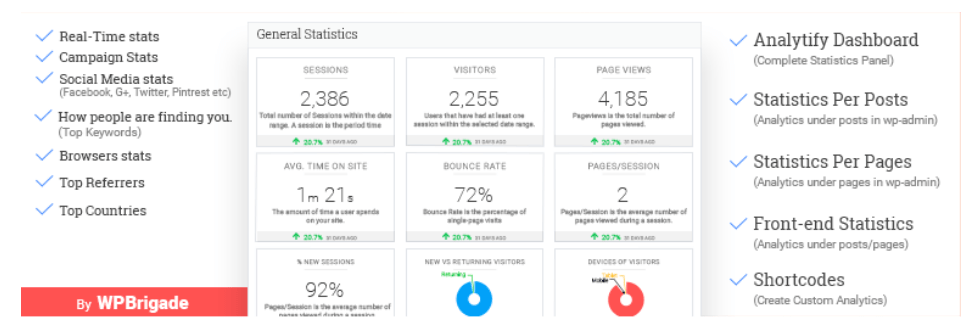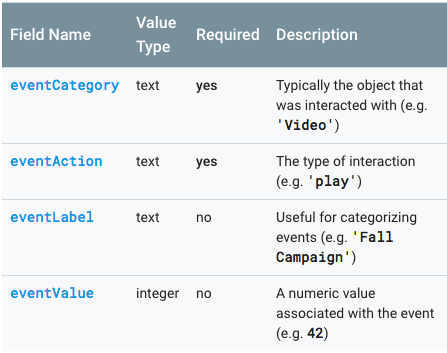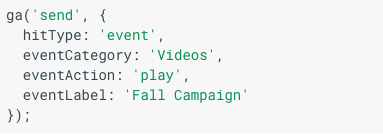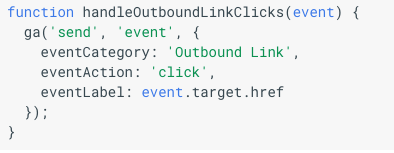What’s inside? Here are the questions answered in today’s reader mailbag, boiled down to summaries of five or fewer words. Click on the number to jump straight down to the question.
1. Book buying habit
2. Lifestyle inflation and workplace lunches
3. Spending in line with values
4. Why did taxes change?
5. Research materials after major project
6. Why not buy rental properties?
7. Weird cooling strategy
8. Financial success on average income
9. Cold basement tips
10. Cheap Kindle books
11. Roth IRA enough to retire?
12. A good quote
Over the last month, we’ve received an enormous amount of snowfall here in central Iowa. We currently have roughly two feet of snow in our yard, with another several inches expected later this week.
With that much snow, simply clearing out the snow to make the driveway passable and to keep the sidewalk clear (city ordinance) becomes a real task, one that would take multiple hours without a snowblower handling most of the work.
Our snowblower has been such an interesting purchase. There have been winters where we haven’t used it at all. There have been other winters (like this one) where we use it multiple times a week for months.
Looking back, I think it was a good purchase for us, but if you’re not going to live in a snowy area for more than a year or two, it’s more cost effective to just pay someone to clear the snow for you. There will be some winters with minimal snow, after all, and even winters with a lot of snow don’t pay for a snowblower in one season.
On with the questions.
Q1: Book buying habit
I’ve read your articles regularly over the years and they have made me think not just about money but about my life itself – what I value and what constitutes meaningful experience and so on. I had a few different things to say to you. First, I think a lot of immigrant families live the way you suggest – they spend less than they earn, they cook at home and they form community networks. Something about not having resources to fall back on makes one more careful as it were. Also I wanted to tell you about my struggle. For most things I’ve reassessed and cut out the inessential things that I bought by default and moved to frugal choices without seeing a major difference in my quality of life. But I can’t seem to stop buying books! I love reading and I’m raising two daughters. I want them to grow up in a house full of books. We go to the library often but we also have a lot of books at home. I’m super selective about what I buy, and often buy second hand. Even then there are enough worthwhile and meaningful books out there that I end up buying. I read a lot to my daughter and read a lot myself, so these books are not exactly being wasted. At the same time I do know that we could easily save much more money if I could stop buying books. What I’m trying now is to have a hobby budget and stick to it, as you suggest.
– Marya
Regarding your comments about immigrant communities, I spent several years working with a collection of people who were freshly immigrated to the United States, and I couldn’t help but notice how tight and supportive that community was. They helped each other out constantly. People new to America had an instant social network around them. They had people to care for them when they were sick. They had a professional support network. They had endless people nearby when they needed to borrow something. It was so obvious how useful and valuable all of this was. It allowed the participants to work harder and more efficiently than people without such support in their lives while also having a richer personal and social life.
Since then, I’ve tried to borrow and emulate aspects of what I learned from them, to my own personal and professional and financial benefit.
As for books, I’m somewhat in the same boat you are. Even with my heavy library use over the last decade, I still own more books than I really should. Part of the reason for that is that I often receive books as gifts (and I sometimes pick them up for reference material for The Simple Dollar), but it still comes down at least in part to my occasional choice to buy new ones without really cycling out the old ones.
I agree with you regarding the desire to have shelves full of books at home so that a child grows up in a home with lots of books available. For us, we decided that once a bookshelf was full of books, we really needed to slow down and adopt a “book goes in, book comes out” approach so that the collection didn’t continue to grow. This forced us to acquire books at a slower rate. A “hobby budget” also helps a lot in terms of putting a cap on overall hobby spending.
Q2: Lifestyle inflation and workplace lunches
There’s this group of people at work that go out for lunch every day together. They go to chain restaurants like Applebees and thus probably spend $10-15 a day for lunch.
One of them says that they do it for “professional advancement” and “networking.” I think it’s just lifestyle inflation justification.
Reason? I brown bag it each day and eat with a group of six people at work. We all hang out at the table in the break area and eat lunch together and chat for a good half an hour. I get the same “professional advancement” and “networking” and I spend like $1-2 a day for lunch rather than $10-15.
It’s a good idea to eat with some people at work as it does help with professional advancement, but that doesn’t mean dropping $15 on lunch every day. That’s just lifestyle inflation.
– Jan
I basically agree with Jan’s point. When I worked in an office environment, I had lunch every day with a few people. Most of the time, it was lunch eaten at the office. I used to bring leftovers or soup each day and the guy I ate with most of the time usually brought a sandwich. We might go out to eat once every other week at most.
I built a really strong professional relationship with those people. We didn’t need to go out to lunch every day to do this.
I strongly encourage people to eat lunch with their coworkers or professional mentors, every day if possible. That doesn’t mean that you should go out for lunch every day. The act of eating lunch with someone doesn’t mean going out for lunch every day – they’re not the same thing. A $15 lunch at a restaurant every day does not equate to “professional networking,” as you can get that with a much cheaper lunch.
Q3: Spending in line with values
I love your recent articles on the idea of getting your spending in line with your values. In some book I read recently there was a section in which the author and his partner made lists of the ten things that makes them each happy on a weekly basis and basically cut back on everything else. In the process they realized that there was a ton of stuff they were spending money on that weren’t on either of their lists. Why spend lots of money on stuff that wouldn’t even crack your top ten things that make you happy for the week?
– Jane
That’s exactly it! I just don’t see the point in spending much money on stuff that doesn’t bring you consistent happiness and fulfillment. If you sat down and made a top ten list of things that bring you happiness on a weekly basis, why would you spend much money on non-essential things that aren’t on that list?
Try it. It’s a good exercise. Make a list of ten things that make you happy in a given week. Make one for this week that just passed, then a week from now make a list for that week. Make a few of them, and then compare them. It’s fine to spend money on things that consistently pop up. It’s a pretty big waste to spend anything beyond the minimum on things that don’t pop up.
The only things on my list that involve spending extra money is coffee (which I prefer to make at home, so it doesn’t cost much), books, and tabletop games. My books and tabletop games come out of a hobby budget. Nothing else is really worth spending a lot of extra money on with any sort of frequency.
As for the book you’re referencing, I think you’re referring to a portion early on in the book Playing with FIRE, which I’m currently reading.
Q4: Why did taxes change?
My husband and I make roughly the same salary every year with just cost of living increases. We have done so for the last 15+ years. My husband always does the taxes in Turbotax and we end up with a pretty reliable regular tax return. This year we’re suddenly paying in?! He did them twice?! What has changed?
– Amy
The big change that has happened is that the 2017 tax law changes are now in effect. What those changes did in a practical sense is that they caused many employers to start taking less out of each paycheck for taxes.
So, let’s say you normally have a tax bill of $10,000 and, over the course of previous years, your employer pulls $12,000 out of your check over the course of the year. When you file your taxes, you’d get a $2,000 return.
The changes to the tax laws, in part, were intended to try to get the amount employers take out of checks closer to the amount people actually pay in taxes.
So, this past year, your employer might have taken out only $9,000 from your checks over the course of the year. That means each month, you’re actually bringing home $250 more than before. However, when it comes around to tax time, you don’t get a refund and you now owe $1,000, as your employer only took out $9,000 for you and you owe $10,000.
If you go back and look at your 2018 paychecks versus 2017, I’m willing to bet that they’re noticeably bigger, more than would be accounted for by a cost of living raise. That’s what happened to your tax refund – you already got it in the form of slightly bigger paychecks.
Q5: Research materials after major project
About 12 years ago my sister was diagnosed with ALS. I spent the last decade doing all of the research I could to figure out how to help her with this awful disease. I found some ways to slow it down but she passed away a couple of years ago. I now have boxes and boxes of research material that consists of research papers and books and journals and notebooks. It’s all sitting in our garage and I don’t know what to do with it. I don’t even know how to recoup any value from any of this stuff.
– Denise
If you’re looking at getting value out of the accumulated research material, it’s honestly likely not going to have a ton of value except to another person who is also investigating ALS. You may want to find an online ALS community and see if any of them are interested in this material and send it to them. Medical researchers likely have access to all of the papers, anyway.
You may have individual books in there that have value. Consider pulling them out and selling them individually. The individual research papers and volumes of academic journals likely have little secondary value, because the people that would want them almost always already have access to them.
I wanted to note that I contacted Denise directly after reading this and suggested that she share all of her research notes online by creating a website containing all of them, linking to source materials as much as possible. There may be a lot of valuable information in her notes for other families hoping to defeat ALS.
Q6: Why not buy rental properties?
Seems to me that rental properties are an incredibly powerful use of one’s money. If you buy a rental property and charge enough rent to pay the mortgage, you wind up owning a house in 15 years that you can either sell or continue to rent out. Why not just get a free house in 15 years?
– Jamie
This is a very optimistic look at rental property ownership that ignores a bunch of factors.
For starters, it assumes that you’ll always have someone renting the house that pays the rent reliably and doesn’t do any damage to the property. It assumes that there is minimal maintenance cost and whatever maintenance is done can be done easily by you. It doesn’t include the cost of property tax or insurance. It doesn’t include inevitable major costs like the furnace, AC, major appliances, etc.
None of those things are merely things you can just assume. They’re all significant costs, some of which you can’t avoid at all and some of which can only be avoided with luck.
Consider this alternate scenario. The property only has a renter in it 70% of the time, and each “good” renter only stays for a year. Every second renter you have is a “bad” renter that stops paying rent after a month or two and eventually has to be evicted after a few months of non-payment. Some of those renters damage the property – maybe they cooked meth in the back bedroom or something. The furnace fails in year three. The AC fails in year five. The washer fails in year six and floods the house with water. Property taxes go up significantly.
In that scenario, you’ve likely lost money on the house, invested a ton of time and energy into it, and you’re still on the hook for all of those mortgage payments. It’s been an awful investment.
The truth is that property rental usually winds up in the middle of these two scenarios. With some luck, it’s on the better end of the spectrum. It tends to be a better deal for individuals willing to invest a lot of time and sweat equity into fixing up the property and maintaining it, but that comes down to a personal preference – you’re giving up free time to make the investment a little better.
Q7: Weird cooling strategy
When I was growing up, on a hot day my mom would fill up a bathtub with cold water and said it was a “heat sink” that would keep our house cooler. Does this actually work?
– Adam
It would probably make the bathroom feel cooler, but it wouldn’t have much of an effect on the house as a whole. In fact, just letting it sit would likely make the house feel warmer because it would increase the humidity in the air as the water in the tub evaporated.
It’s not a bad idea to take a cool bath on a hot day to cool off, but don’t just pour water to let it sit. It won’t help and it’ll probably just make things more humid inside.
That being said, the reverse often does help in the winter. One of the advantages of making a big pot of soup on a cold day, for example, is that it adds heat and humidity to a house that’s very likely cold and dry. However, the soup itself is an added benefit and you want your house to be a little more humid if it’s dry in the winter (which is often the case with a typical furnace).
Q8: Financial success on average income
It feels like right now in America you can’t make financial success happen on an average income. There are too many basic expenses that have to be covered. By the time you pay for rent, food, utilities, getting to work, etc. there’s nothing left, even if you do nothing fun.
– Kelly
Sarah and I have been within $10K of the average American income for a family of five almost every year over the last decade. In that time, we managed to pay off all of our debts including a home mortgage and save a ton for retirement. It can be done.
The biggest challenge, in my opinion, is that you have to be able to say no to an awful lot of temptation. There is spending temptation everywhere – big stuff, small stuff, forgettable stuff. My belief is that people spend a lot more on non-essentials than they think they do because so much non-essential spending is utterly forgettable and quickly forgotten, leaving you just an empty bank account wondering what happened and believing that financial success is impossible.
Don’t get me wrong – it is very tight if you’re making a below average income, especially as you start getting down toward minimum wage income. The thing that everyone needs to watch out for, though, is “invisible” spending. It’s real and it really adds up.
Q9: Cold basement tips
Last May we moved into a new house and set up a family room in the basement. During the summer it was great because the basement was always a few degrees cooler than the main floor. During the winter it’s awful because the basement is always several degrees cooler than the main floor. It’s freezing down there! What’s the best strategy to fix this? Insulation? Space heating?
– Jeremy
We have a similar problem, but it’s only really noticeable on extremely cold days where it’s substantially below freezing. On those days, our basement can get quite cold.
Cold basements are mostly caused by ground level cold. If the ground outside is cold, it’s going to make your basement cold. There’s almost no way to avoid this – even tons of insulation is only a partial solution.
Our actual practical solution is to have a space heater for the basement that we plug in on cold days where it’s needed. Another practical solution is that, if we’re going to be spending all day in the basement, we close all of the registers on the main floor and upper floor of our home so that all of the warm air flow goes into the basement. Aside from that, the realities of thermodynamics limits what can actually be done to help this problem.
Q10: Cheap Kindle books
Got a Kindle for Christmas but all books are expensive. The Kindle Unlimited program seems to be 90% junk. How do you get good books on the Kindle without paying almost as much as you do at a bookstore?
– Aria
I watch the Kindle Daily Deal page pretty closely. While a lot of those books aren’t of interest to me, there are usually a few books a week for $1.99 or less that are interesting to me.
I also use Overdrive to check out ebooks via my local library for free. They just disappear when the checkout period is up. Unfortunately, I’ve had books disappear when I’m in the middle of them, but I can usually just check them out again (though I have to go back to the end of the waiting list).
Those two options keep me in plenty of books to read!
Q11: Roth IRA enough to retire?
If a person just maxes out their Roth IRA each year, is that enough to retire on at age 65?
– Brian
There are a few assumptions wrapped up in this question. The big one is whether this person is starting at a young age. Also, is this person married or ever going to get married?
Let’s say you have a person starting at age 25 and is going to be single throughout their life. The income limit for contributing fully to a Roth IRA is $120,000 a year, so we’ll assume that as a steady income for the next 40 years. We’ll also assume a cap of $6,000 a year in contributions until age 50, then $7,000 a year thereafter up until age 65, and we’ll assume an annual average return of 7% per year. Yes, that’s a lot of assumptions, but you have to make a lot of them to answer a question like this!
If those are your assumptions, the account will have $1,265,743 in it at age 65. If you adopt a 4% withdrawal rate, that means you’ll be able to take out $50,630 a year. That would be on top of your Social Security income and any other earned income. Of course, that money won’t go as far at that point, but on the other hand, it’s likely that annual contribution amounts will also go up over time to counterbalance that.
My belief is that if you start at age 25 and contribute the maximum amount each year to a Roth IRA, you should be in pretty good shape at age 65 to retire, even with no other retirement savings. You probably won’t be able to fully match your salary, but you should have more than enough to live comfortably on, especially when there are no career costs involved.
Q12: A good quote
Was reading my devotional this morning and saw a quote that made me think of your writing on The Simple Dollar.
“It is quite impossible to unite happiness with a yearning for what we don’t have. Happiness has all that it wants, and resembling the well-fed, there shouldn’t be hunger or thirst.” – Epictetus
– Stan
Great quote! It speaks a deep truth.
If you spend all of your time wanting what you don’t have, you’re never going to be happy. Happiness comes from what you have, not from what you don’t have.
That doesn’t mean that goals aren’t valuable – they give you something to aim for. However, the best goals tend to be improvements in yourself, not improvements in what you have. The better you are as a well-rounded person, the more likely it is that your life will naturally have great things in it that are sources of happiness.
Be happy with what you have while making yourself better and you’ll find that life is usually pretty good.
Got any questions? The best way to ask is to follow me on Facebook and ask questions directly there. I’ll attempt to answer them in a future mailbag (which, by way of full disclosure, may also get re-posted on other websites that pick up my blog). However, I do receive many, many questions per week, so I may not necessarily be able to answer yours.
The post Questions About Taxes, Work Lunches, Books, Cold Basements, and More! appeared first on The Simple Dollar.

Source The Simple Dollar http://bit.ly/2tplfAq


